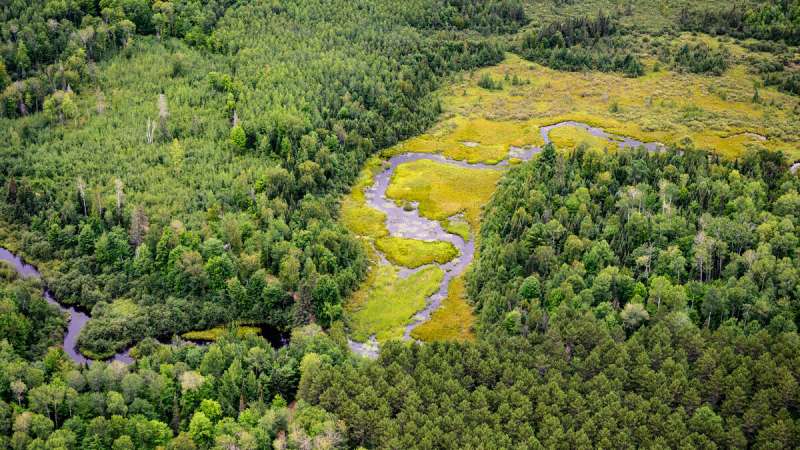How forest structure drives productivity

Forests make large contributions to Earth's climate, from releasing water vapor to pulling in carbon dioxide from the air, which mitigates global warming. The arrangement of trees affects how forests use light and water for photosynthesis, and it is known that more complex forests have higher productivity, or rates of photosynthesis. But the specific factors driving this relationship are lacking.
In a recent study published in the Journal of Geophysical Research: Biogeosciences, Murphy et al linked two types of data to address this knowledge gap. Data were collected at nine sites in the Chequamegon-Nicolet National Forest in northern Wisconsin using a first-of-its-kind very high density eddy covariance flux tower network. Instruments on the towers measured the exchange of carbon, water, and energy between forest sites and the atmosphere, which was used to calculate productivity. The researchers also characterized forest structure using lidar. This method collected 3D details, such as canopy roughness and tree height variation.
In addition, the team developed mathematical models to identify key structural factors underlying productivity. They found vertical heterogeneity metrics to be the most influential drivers. These metrics reveal the height distribution of vegetation at a site—low vertical heterogeneity indicates trees of similar height, such as after clear-cutting, whereas high vertical heterogeneity reflects trees distributed across heights. Yet the relationship between forest structure and productivity is not direct. Instead, it is mediated by how efficiently trees use resources—especially water—to produce biomass.
According to the authors, these results will improve mathematical models for how forest ecosystems respond to management. Such analyses could lead to better strategies for addressing climate change.
More information: Bailey A. Murphy et al, Unraveling Forest Complexity: Resource Use Efficiency, Disturbance, and the Structure‐Function Relationship, Journal of Geophysical Research: Biogeosciences (2022). DOI: 10.1029/2021JG006748
Provided by Eos
This story is republished courtesy of Eos, hosted by the American Geophysical Union. Read the original story here.




















